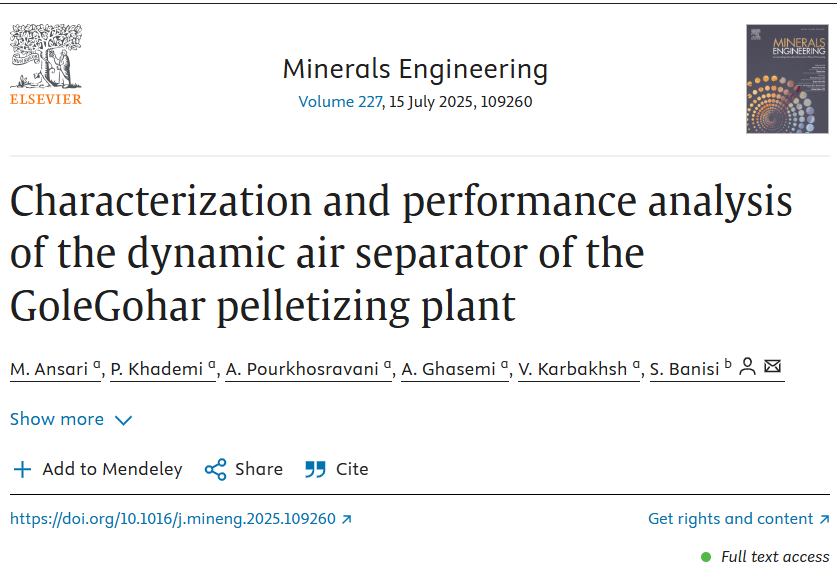عنوان مقاله
Characterization and performance analysis of the dynamic air separator of the GoleGohar pelletizing plant
نویسندگان این مقاله آقایان محمد انصاری، پیمان خادمی، امیرعلی پورخسروانی، علیرضا قاسمی، وحید کاربخش و دکتر صمد بنیسی هستند.
چکیده مقاله:
This study combines CFD, DEM simulations, and process-related measurements with continuous field monitoring to characterize a dynamic air separator, the key component of the dry grinding circuit in the GoleGohar pelletizing plant. A mathematical model was proposed and tested to describe the selectivity curve of the separator—conceptualized as a series of two separators, a rotating cage and a cyclone—which accurately captures the fish-hook phenomenon. The model demonstrated excellent agreement with experimental data (R2 = 0.98), validating its effectiveness in predicting separator performance. Operational parameters affecting the performance of the separator were also investigated. A comparison of two control strategies regarding the cage rotational speed showed that using a variable speed improved the product’s Blaine number from 1154 ± ۲۴۰ cm2/g to 1195 ± ۷۲ cm2/g, indicating a finer and more stable product. Field observations revealed that fine particles (∼۷ µm) accumulated in the volute chamber due to improper cyclone underflow discharge, suboptimal damper configuration, reduced bag filter efficiency, and uneven airflow distribution. Corrective measures, including modifying cyclone underflow discharge design, reconfiguring damper plates, increasing bag filter suction, and modifying guide vanes, reduced material accumulation from 30 % to 10 % of the chamber’s cross-sectional area. DEM simulations further identified non-uniform feed distribution on the distributor plate, causing an asymmetric load on the separator. A modified design significantly improved feed uniformity, judged by with the reduction of the standard deviation of number particles distributed around the plate from ± ۵۰ to ± ۱۰٫ This improvement ensured more consistent particle interaction with aerodynamic forces, leading to higher classification efficiency and overall performance.







